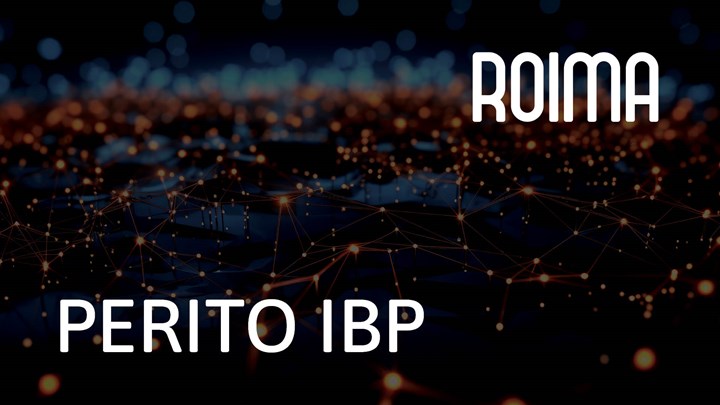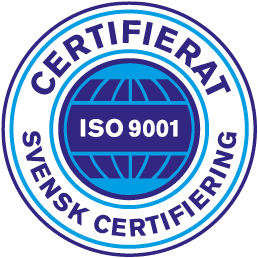Sustainability in supply chain planning and strategy
Businesses worldwide prioritize sustainability, driven by environmental concerns and evolving regulations. Supply chain planning professionals now play a pivotal role in integrating sustainability into operations while balancing profitability and service levels.
This article explores the complexities of sustainable supply chains and provides actionable strategies to acquire, handle, and evaluate emission data effectively. It also delves deeper into the frameworks, technologies, and ongoing practices required to ensure success in this increasingly vital area.
Sustainability adds a new dimension to supply chain planning
Traditionally, supply chain planning has focused on cost efficiency and service levels. However, sustainability introduces a critical new layer, requiring planners to assess the environmental impact of their products and processes. With sustainability goals taking center stage, businesses must approach planning with a mindset that combines responsibility and profitability.
Planners revisit established strategies, such as service level agreements (SLAs) and product flows, to align with sustainability goals. Integrating sustainability means utilizing real-time emission data, enabling planners to balance emissions reduction with profitability and operational performance. This shift requires a proactive approach, where planning is reactive to emerging challenges and predictive to drive long-term improvements.
Emerging regulations, such as the Corporate Sustainability Reporting Directive (CSRD) and Scope 3 emission tracking requirements, emphasize the need for transparency and accountability across supply chains. Businesses must also align with frameworks like the EU Green Deal and the Science-Based Targets initiative (SBTi) to meet regional and global expectations for sustainability.
Benjamin Obling, COO PERITO IBP and partner at Roima Intelligence, explains:
”Business education taught us to maximize profit. Now, we need to integrate sustainability metrics into simulations and optimize for the best results at the lowest cost. By blending sustainability considerations with financial performance, businesses create robust, future-proof strategies.”
Acquiring operational emission data for sustainability
Accurate and granular emission data forms the foundation for evaluating sustainability measures. Supply chain planners need to capture Scope 1, 2, and 3 emissions data to gain a complete view of environmental impact. Collecting this data can be challenging, but it is crucial for establishing accountability and making data-driven decisions.
Key steps for data collection:
- Utilize ERP systems: Start by identifying emission data stored in Enterprise Resource Planning (ERP) systems for a baseline analysis.
- Expand data sources: Incorporate IoT devices, external databases, and supplier data to provide a comprehensive emissions profile.
- Automated data collection: Use AI tools and blockchain technology to minimize human error and ensure transparency.
- Standardize methods: Adopt GHG Protocol standards to ensure consistency and comparability of data.
- Incorporate Digital Twins: Simulate scenarios to forecast the environmental impact of different operational strategies and build more sustainable plans.
”To operationalize sustainability targets, we need transparency and detailed insights. The goal is to cut emissions where they impact us least – and even where we can benefit,” Obling notes.
Scenario planning tools, such as PERITO IBP, can integrate this data to model sustainability trade-offs effectively and align goals across teams.
Handling emission data effectively
The abundance of data presents challenges in daily operations. Planners must create default supply chain decisions aligned with sustainability targets to streamline processes. Making sustainability-driven decisions requires consistency, monitoring, and the flexibility to adapt strategies when needed.
Practical examples:
- Opt for sea freight over air freight as the default transportation method.
- Increase container fill rates to optimize transportation efficiency, even if it affects working capital temporarily.
- Consolidate orders to minimize shipment frequency and lower emissions.
- Prioritize suppliers and partners that share sustainability goals and practices.
A growing focus on circular supply chains emphasizes reuse, recycling, and waste reduction. Businesses can adopt models that prioritize closed-loop systems, enabling products and materials to remain in circulation for longer and reducing environmental impact.
Real-time monitoring through tools like PERITO IBP lets planners track emissions, costs, and service levels simultaneously. Planners must also define exceptions for sustainability goals – such as using air freight to prevent stockouts – and ensure these decisions align with corporate sustainability policies.
”We must balance emission reductions with profitability and service levels. This requires iterative testing, evaluating, and refining processes over time.” Obling emphasizes.
Monitoring and evaluating sustainability efforts
Sustainability requires continuous monitoring and improvement. It is not a one-time effort but a long-term journey toward better practice.
Steps for evaluation:
- Measure at granular levels: Track emissions by product, transportation mode, and supplier.
- Set baseline targets: Use initial data to establish realistic benchmarks.
- Track progress with tools: Monitor performance through integrated planning systems like PERITO IBP.
- Analyze deviations: Assess why targets were missed – for example, increased sales volumes led to higher total emissions despite lower per-unit emissions.
- Incorporate feedback loops: Continuously refine strategies based on outcomes and stakeholder input.
”We must evaluate whether we missed targets due to unforeseen challenges or overly ambitious goals,” Obling says.
By comparing the cost of initiatives against emissions reductions achieved, planners can identify the most efficient strategies and continuously refine them. Performance reviews also create opportunities to share successes and lessons learned across teams.
Utilizing existing tools for sustainability success
While sustainability adds complexity, supply chain planners already have tools that can be adapted. Scenario planning, inventory management, logistics optimization, working capital control, and data analysis can all integrate sustainability metrics.
- Scenario modeling: Tools like PERITO IBP simulate sustainability trade-offs, enabling data-driven decisions.
- Inventory and logistics optimization: Streamlining transportation and warehousing processes reduces emissions and improves efficiency.
- AI and Machine Vision solutions: Automate quality control to minimize waste and predict maintenance needs.
- Real-time dashboards: Provide visibility into emissions data, enabling agile decision-making and immediate responses to deviations.
By utilizing these tools, businesses can transform sustainability challenges into opportunities for innovation and competitive advantage.
Embrace strategic compromises for competitive advantage
Integrating sustainability into supply chain planning is no longer optional – it’s essential for businesses to remain competitive in an environmentally conscious world. Planners must embrace this shift, balancing emissions reductions with profitability and service levels.
Sustainability introduces new strategic dimensions, requiring flexibility and a willingness to make trade-offs. Companies that successfully incorporate sustainability into their operations reduce environmental impact while enhancing efficiency, resilience, and market positioning.
Next steps: Are you ready to transform your supply chain with sustainable practices? Contact us to explore how Roima’s PERITO IBP can empower your business to achieve sustainability goals without compromising performance.
Glossary of terms
- CSRD (Corporate Sustainability Reporting Directive): A regulatory framework requiring companies to disclose their environmental and social impacts.
- Scope 1, 2, 3 emissions: Categories of emissions defined by the GHG Protocol:
- Scope 1: Direct emissions from owned or controlled sources.
- Scope 2: Indirect emissions from purchased energy.
- Scope 3: Indirect emissions from the value chain, including suppliers and customers.
- EU Green Deal: A set of policy initiatives aimed at making the EU climate-neutral by 2050.
- SBTi (Science-Based Targets Initiative): This initiative provides companies with a framework for setting greenhouse gas reduction targets that are in accordance with climate science.
- Circular supply chain: A sustainable model focusing on reuse, recycling, and minimizing waste to create closed-loop systems.
- Closed-loop systems: Systems designed to keep materials and products in circulation through recycling and reuse, reducing environmental impact.
- ERP (Enterprise Resource Planning): Software systems that manage business operations, including supply chain data.
- IoT (Internet of Things): Devices connected via the internet that collect and transmit real-time data.
- GHG protocol: A globally recognized framework for measuring and managing greenhouse gas emissions.
- Scenario planning: Modeling different strategies to evaluate their impact on sustainability goals.
- Blockchain technology: A secure way to record data that ensures transparency and traceability.
- Digital Twins: Virtual models of physical systems used for scenario planning and performance optimization.
-
Perito
PERITO IBP
Additional text for product card: A complete Integrated Business Planning package designed to help you navigate rapid changes in your business and profitably manage your supply chain.














